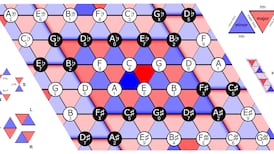WHEN INTENSE light shines into your eye your pupils typically reduce in size automatically to help protect the retina at the back of the eye. But could that happen when you see an image that merely gives the illusion of being bright?
It appears so, according to a study published online this week in the Proceedings of the National Academy of Sciences.
They used an infrared eye-tracker to record the pupil diameters of participants as they looked at various illusions of brightness or lightness “where the physical luminance of the stimulus and our perception of its luminance do not match.”
And what did they find? When observers looked at illusions that seemed bright their pupils quickly reduced in diameter and then dilated again over time.
“That these illusions can result in pupillary constrictions is remarkable, given that eye-catching stimuli typically produce a dilation of the eye pupil,” write the researchers from the University of Oslo. “. . . our main conclusion is that the pupillary responses are rapidly matched to our subjective perception of light intensity, and the pupil slowly adapts to the actual physical intensity of the light.
“In other words, the pupils reflect almost instantaneously what we think we see.”









